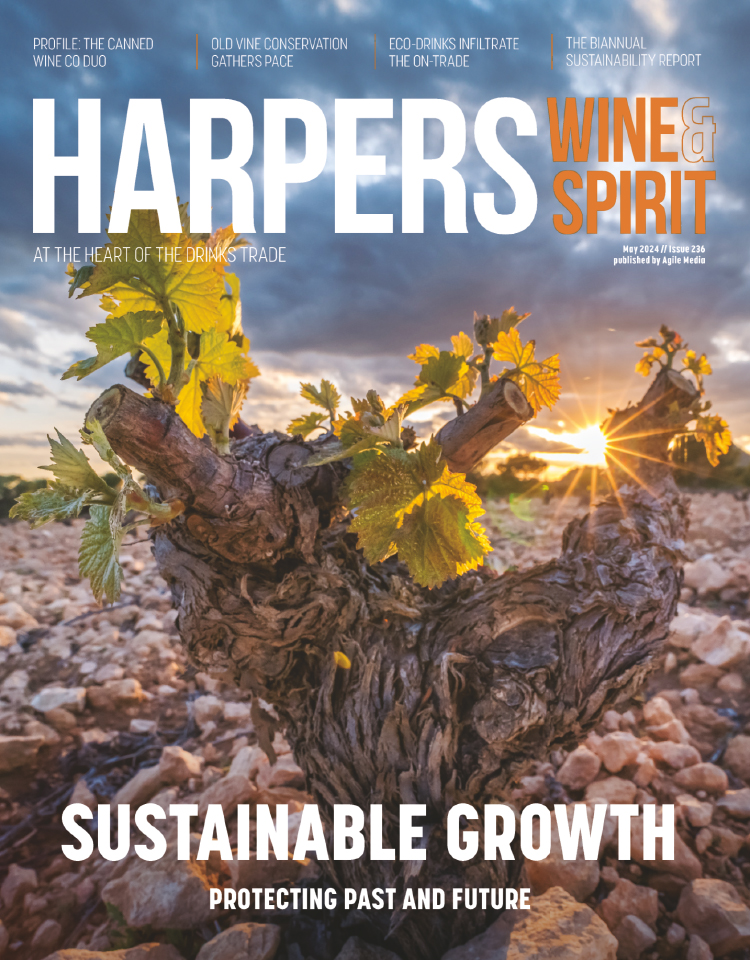The Interview: Peter Nixson, Wine buyer, British Airways
Peter Nixson joined BOAC as cabin crew in 1973 after being thrown out of university for failing his first year exams. In 1986, Business Traveller magazine did a survey of the wine served on board airlines, and BA came 16th out of 16. The CEO wanted to see an improvement, so a secondment was created for someone to join the catering team. Peter joined the team in 1986, became BA's wine and beverage development manager in 1990, and has been there ever since.
Compared to an average restaurant, BA is a big business. Do passengers get through a lot of wine?
Yes, I need more than half a million nine-litre cases a year to quench the thirst of our 35 million passengers. In first class, 8,000 bottles of Charles Heidsieck Blanc des Millnaires 1995 are drunk each month, and there's always a classed growth on the first class wine list. At the moment, you can drink Chteau Loville Poyferr 1995.
How do you decide what to buy - and where do you keep such huge stocks?
We're an airline, not a wine merchant, so we buy forward' rather than en primeur. The chteaux are paid up front and store the wine until we need to ship it. At the moment, I'm tasting 1999, 2001 and 2002 clarets with our wine consultant Jancis Robinson MW for flights in 2010 to 2012. We've almost run out of the 1995s, but have about 16,000 cases of claret to last until 2010 - and that's all for first class.
So the only decent wine is in first class then?
Not at all. Our economy wines are very good. The big difference is that for our World Travellers in economy, and on short-haul flights, quarter bottles are standard. It's a bit of a problem in the US, as not many bottlers will do it. But in France, Italy and Spain you can have anything bottled in quarters - maybe not Sassacaia, but certainly Chianti Classico. When I started at BA, quarter-bottle wines tended to be white Bordeaux, white Burgundy and Hock. The white Burgundy was a mess: the first container would be good but the third would taste like battery acid no matter who the producer was. I got fed up, and in 1991 approached Nick Nobilo at Nobilo Winery in New Zealand to produce 15,000 cases of Chardonnay in quarter bottles. At that time, there wasn't the right manufacturer or the bottling line equipment, and Nick didn't have enough vines. But in a week, he had bought the bottling equipment, sourced the grapes and persuaded New Zealand's only glass manufacturer to buy a quarter-bottle mould. Nobilo now produces BA's Marlborough Sauvignon Blanc rather than Chardonnay, and it's our most popular white.
Sorting out tax and duty issues must be quite stressful.
Definitely! Nothing is simple: all wines on international flights are duty-free; those consumed on domestic flights are taxed. Wines are shipped either to a bonded warehouse at Heathrow or one of 40 warehouses abroad. There are only two members of staff managing this supply chain, so getting the right wine to the right place at the right time is a logistical nightmare. Most of the time it seems to work, though. However, the tax stamping issue on spirits has caused huge problems. A tax stamp proves that duty has been paid on a bottle of spirits. But bottles for in-flight use are sold duty unpaid, while bottles served in first class lounges must be duty-paid. It's a total headache! These laws are aimed at cross-Channel smugglers not airlines.
Do you think wine tastes differently at 35,000ft?
I don't think the wines change at all - it's the people that change. What happens is you get dehydrated after a couple of hours: your skin becomes dry and your nose dries out so you can't smell as well. The best wine at ground level will be the best wine at 35,000 feet.
Have you noticed any changes in passenger drinking trends over the years?
When I started with BA in 1973 as an air steward, we'd serve four bottles of Scotch a flight; nowadays a bottle rarely gets opened. Since becoming buyer in 1986, I'd say wine consumption has increased almost threefold in 15 years - and that's not from extra bums on seats. White outsold reds three to one in the early 1990s. But after the publication of the French Paradox, the balance shifted in favour of reds and now it's equally split.
Do in-flight crew get any formalwine training?
Cabin crew are not sommeliers. New staff are introduced to the basics by Jancis Robinson on a BA-commissioned video, and I produce an informal monthly newsletter. But with an absentee workforce of 14,000, it's virtually impossible to train them all. For many years staff attended WSET courses, but this took a back seat during tough times at BA. But I'd like to get together with the WSET again and see if we can put some sort of programme together.
What can passengers expect to drink in the future?
Bordeaux and prestige Champagne will continue to feature heavily in first class, and we've got a tender for a new Australian white. I'm also impressed with Argentinian wines - we've got a few from Mendoza on the first class list - but there's a problem with consistency. The southern Rhne make great aeroplane wines - food friendly and spicy - and Chteauneuf-du-Pape is hugely popular. And as we're British Airways, I do push local wines: Chapel Down was listed in quarter bottles and, last year we had a Bacchus from Three Choirs. The next thing you know the wineries were getting calls from BA passengers asking where could they buy it!






